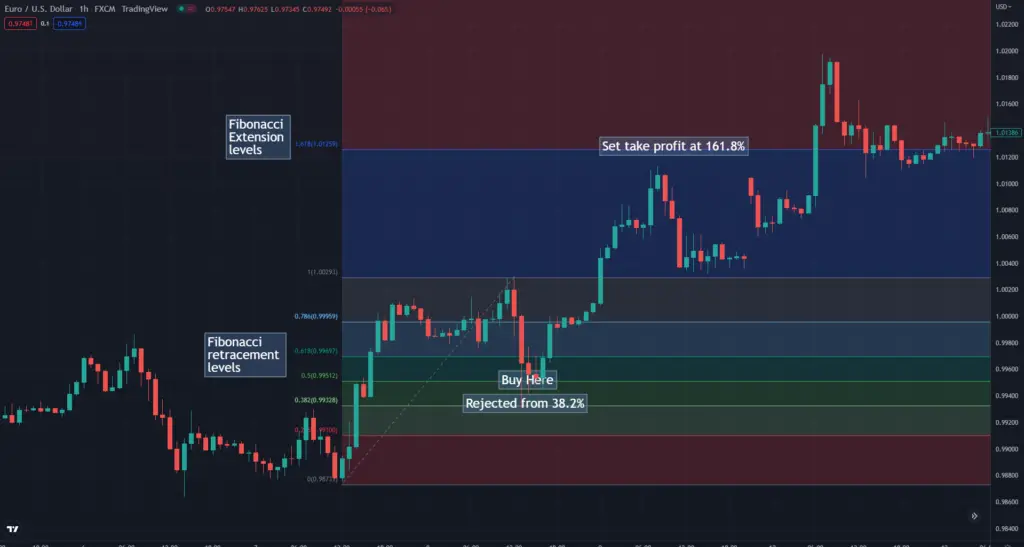Fibonacci ratios are one of the most powerful and used ratios in forex trading. However, Fibonacci tools are very popular amongst traders but professionals never depend solely on this tool. They tend to use fibo tools combined with other methods like price action, candle confirmation, and other technical indicators like stochastic, rsi, Bollinger bands, or fundamental analysis.
Traders use Fibonacci retracement to enter any trade where they use the Fibonacci extension to settle “Take Profit.” This is the core difference between Fibonacci Retracement VS Extension.
Fibonacci Retracement VS Extension
| Fibonacci Retracement | Fibonacci Extension |
| Fibonacci retracement levels will show you how deep a retracement is in the market. | The extension will indicate where the price will go after a retracement. |
| Retracement levels measure the short or long pullback within a trend. | Fibonacci Extensions amount to the impulse waves in the direction of a trend. |
| 23.6%, 38.2%, 50%, 61.8%, and 78.6% are the most popular and widely used fibonacci retracements levels. | Traders use 61.8%, 100%, 161.8%, 200%, and 261.8% levels as fibonacci extension levels. |
| Fibonacci retracements implement percentages to a pullback of any trend. | The Fibonacci extension implements percentages to move in the trending direction. |
| Suppose the price of EURUSD goes from 0.9500 to 0.9600. Then the price went back to 0.9550. The move from 0.9600 to 0.9550 is a retracement. | If EURUSD starts to rally again and goes to 0.9700, then that is an extension. |
Live example of fibonacci retracement VS extension
Now I am giving an example of both retracements and extensions in a single image. Thus you will clearly understand the whole scenario and the core difference between them. Look at the picture of how you can take the entry from Fibonacci retracement levels and how you can set your take profit in Fibonacci extension levels.

